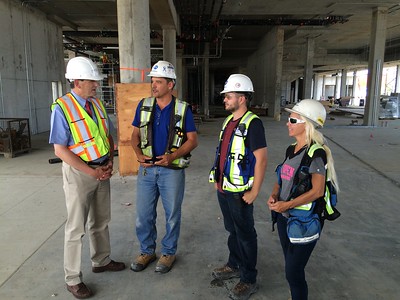Federal monetary policy experts are clearly worried about the prospects for a global recession. A broad group of global and national factors that could negatively affect the economy seem to be combining. Coronavirus fears and/or realities; extreme weather; uncertainty over the US presidential election; the various trade wars and their respective fallouts; the state of manufacturing; sharp changes in energy prices and/or availability; and the post-Brexit European economy are among the factors making people nervous. The prospect of an economic downturn raises questions about the advisability of recession construction projects.
I happen to work in a contrarian space. My workload increases substantially when the economy tanks, or when businesses think the economy is growing soft. (I’ve been super-busy since last spring.) One thing I’ve noticed is that businesses actively, urgently and unrelentingly seek recessionary shelter in “government work” when the economy sours.
When the economy is good, public works projects can be expensive and government grants seem hardly worth the effort. Labor is less available; materials costs rise; work is more plentiful; grant rules are highly restrictive. Businesses also have their pick of other income-producing projects. Publicly funded projects just aren’t as attractive.
When the economy is bad (or looks bad, or seems like it might get bad), sometimes the taxpayer is the best (or only) game in town. Businesses know that while the profit margins are likely to be slim, recession construction funding won’t fall apart. They also know that public purchasers will pay their bills.
WCC has experience with recession construction
During a recession, certain sectors – like construction – go into survival mode. Competing companies bid artificially low on projects, betting that they can cut corners to make up for the price cuts in their bid packages. Winners also bank on change orders to squeeze more money out of the buyer once the project is underway. They can also cut the number of workers on a job site, but that risks construction delays. Using non-union labor can reduce the contractor’s costs if it doesn’t pass along the savings to the buyer.
The results of recession construction projects can be predictable. You need to look no farther than the HFC to see that. At the July 30, 2019 Board meeting, WCC Chief Financial Officer Bill Johnson critiqued the quality of the HFC’s construction this way:
“Um, uh, one thing that I will say is that upon further assessment of not only the hot tub, but of a lot of the work – a lot of the work in the original construction, it was less than stellar quality. And so, a lot of the repairs that we’re starting to see now are – probably a good five to seven years ahead of schedule. And so I would anticipate that we’ll be bringing deferred maintenance projects back to the Board as we – uh – get into the next couple of years here, just to keep the Fitness Center up to par. It’s just the reality and we’ve got a commitment to make that work. “
Since this quote, the men’s hot tub in the Health and Fitness Center has begun leaking, and now requires a $165,000 repair.
Green construction can hide inflated project costs
The HFC opened in 2007, just as the financial markets collapsed. While the collapse surprised many people, the economy began showing signs of significant stress as early as 2005. Johnson’s assessment of the HFC construction supports the idea that self-preservation motivates firms to seek government projects during recessions, but that the public buyer doesn’t always benefit.
Low quality work that fails earlier than planned is just one way that a recession can negatively impact construction. WCC has committed to using “green building design” for new construction. While laudable (and even desirable), green design is expensive to build and maintain. It also provides an opportunity for contractors to claw back the cash they low-balled out of their initial bid.
While some project managers may look to recessions to lower the cost of construction, that’s not what happens. Realistically, low-quality projects get built during recessions because contractors skimp on materials and labor to avoid losses. These defects don’t show up until 5-10 years down the road, when systems begin to fail.
You can argue that WCC should be managing the project closely enough to ensure these lapses in quality don’t happen. Perhaps, but that didn’t prevent low quality construction at the Health and Fitness Center. And it won’t prevent low-quality construction at the “Advanced Transportation Center.”
This is just one more reason to avoid recession construction projects.
Photo Credit: Province of British Columbia , via Flickr

















